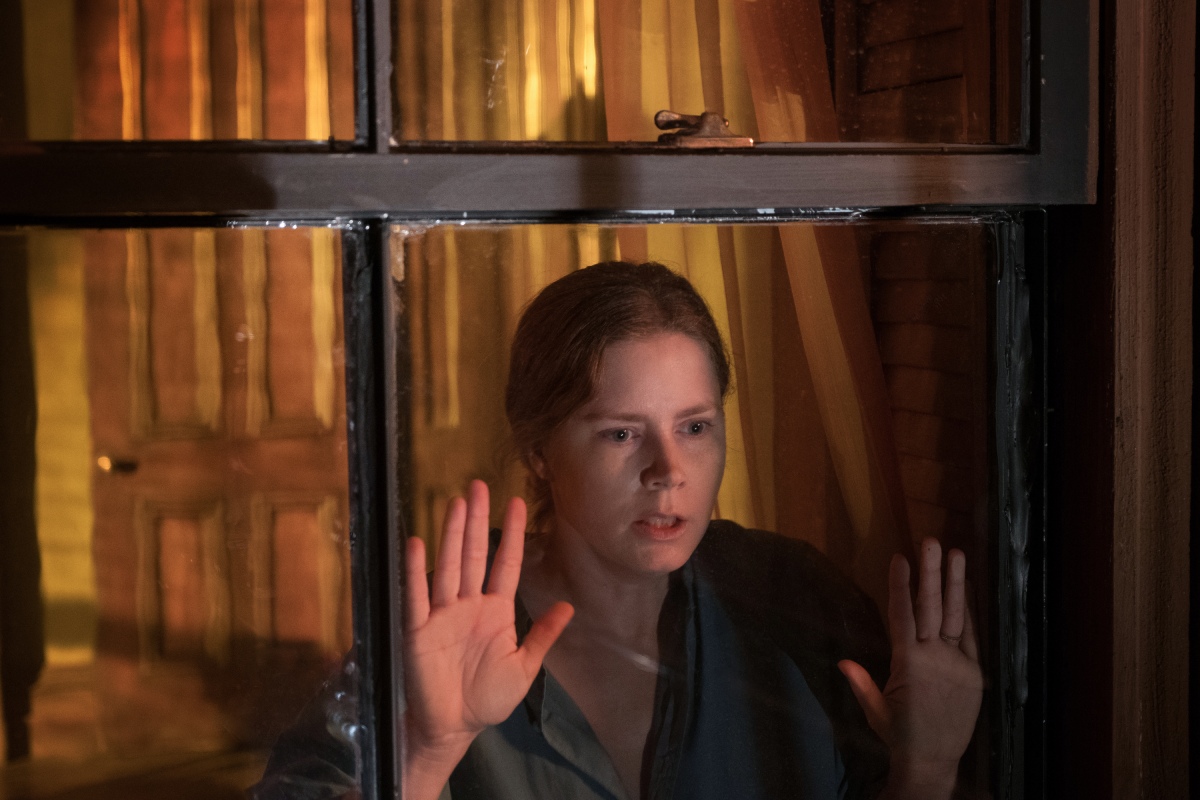Everyone is hiding something in “The Woman in the Window.” Unfortunately, the challenge here isn’t so much deciphering the film’s array of generously signposted secrets but, instead, finding reasons to care about them in the first place. In that regard, versatile British director Joe Wright’s visually stylish, but ultimately sluggish thriller commits perhaps the most cardinal genre sin of them all. Somewhere amid suspicious neighbors who might have killed someone, stormy New York City nights, and one too many instances of pill-popping and heavy-drinking, it forgets to have fun, aggressively molding its “Gone Girl” echoes into a contemporary “Rear Window” template (if that much isn’t already evident by the title).
READ MORE: Summer 2021 Preview: Over 50 Movies To Watch
Adapted by Tracy Letts from the best-selling novel by A.J. Finn (a pseudonym for Dan Mallory, who stirred up some controversy a few years back due to, among other things, fabricating details about his personal history), “The Woman in the Window” finds its nosy Jimmy Stewart in a capable yet generically forgettable Amy Adams. She plays the once suicidal Anne Fox, a child psychologist stuck at her handsomely sized and attractively decorated Harlem brownstone, not because of a broken limb, but a severe case of agoraphobia triggered by thinly veiled reasons that would be explained later.
Through swift montages, we learn that Anna maintains a handful of connections to the outside world beyond the food deliveries she hesitantly accepts behind a half-open door. There is her concerned ex-husband Ed (Anthony Mackie), whom she often talks to on the phone about her daily battles—we get to see him only through flashbacks fed into the story in annoying scraps. There is also her overbearing therapist (fittingly played by Letts himself), who seems to intensify Anna’s problems instead of alleviating them. Lastly, there is her friendly, handsome basement tenant David (Wyatt Russell), who enters Anna’s townhouse as he pleases to take care of minor handy work around the property.
As if to knowingly nod to the masters of the kind of movie she is in, Anna spends her days watching old films by the likes of Alfred Hitchcock and Otto Preminger, while dozing off on a variety of substances. (Valerio Bonelli’s editing of unsubtle thuds hammers on the fact that Anna often loses her handle on time.) Her routine gets enlivened when the Russells, a family with a mysterious past, moves across the street. First, the young Ethan (a memorable Fred Hechinger) turns up on Anna’s doorstep with a neighborly gift his mom sends over. (In this version of the city this New Yorker of 21 years is deeply unfamiliar with, you apparently don’t get alarmed if new people on your block send you presents.) Suspecting that the sweetly shy Ethan is being abused at home by his authoritative father Alistair (an effectively intimidating Gary Oldman), Anna decides to keep an eye on him and extends the kid an open invitation to drop by anytime.
Anna’s next guest is no other than the Mama Russell Jane, played by Julianne Moore in a performance that breathes some much-needed fresh air into the film’s dull mode. With a purposely exaggerated accent and extreme mannerisms that bring to mind her superficial, darkly entertaining “Maps to the Stars” character, Moore looks to be the only one having a good, mischievous time with the film’s whodunit premise. Too bad she doesn’t stick around too long—after a night of female bonding over bottomless drinks, Anna witnesses Jane’s murder in the hands of an unseen assailant from across the street. Things get even more complicated (or shall we say, obvious) from there, when Alistair and Ethan present an entirely different Jane Russell (Jennifer Jason Leigh) to the officers (one, thoughtfully portrayed by Brian Tyree Henry), propelling Anna to take matters into her own hands.
“The Woman in the Window” thoroughly struggles to keep the viewer interested in Anna’s fight to prove the veracity of her version of the story. Soon enough, you settle into a familiar “hysterical woman no one will believe in” beat that only shallowly engages with genuine mental illness, suicidal tendencies, and lingering familial trauma. It would have been one thing if this crime flick rich on suspects could have conjured up some chills and thrills. But between a laughable Halloween segment and ineffective jump scares, the script doesn’t offer much in the name of basic genre pleasures.
It would be no fun to spoil whether Anna is indeed crazy or if Leigh is pulling a “Single White Female” of sorts on the real Jane. But neither is watching “The Woman in the Window” tick off all the predictable boxes until it resolves into an ending that you can sniff from miles away. At least Wright steers clear of the monotonous, icy, blue-tinted look that’s sadly become a staple of this kind of fare in the last decade. Infusing the film with his ornate visual sensibilities that adorned many of his previous period pictures such as “Atonement” and “Anna Karenina,” the filmmaker almost defiantly uses colors, light tricks, and reflections beautifully throughout his latest. Lifting up his artistry are Kevin Thompson’s striking production design of silky curtains and candy-colored walls that impressively brings Anna’s house to life (it was reportedly built on a Brooklyn soundstage) and Bruno Delbonnel’s gorgeous cinematography that ironically deserves the big-screen treatment. If only the movie could earn these artisans’ top-shelf efforts. [C-]
“The Woman in the Window” arrives on Netflix on May 14.





